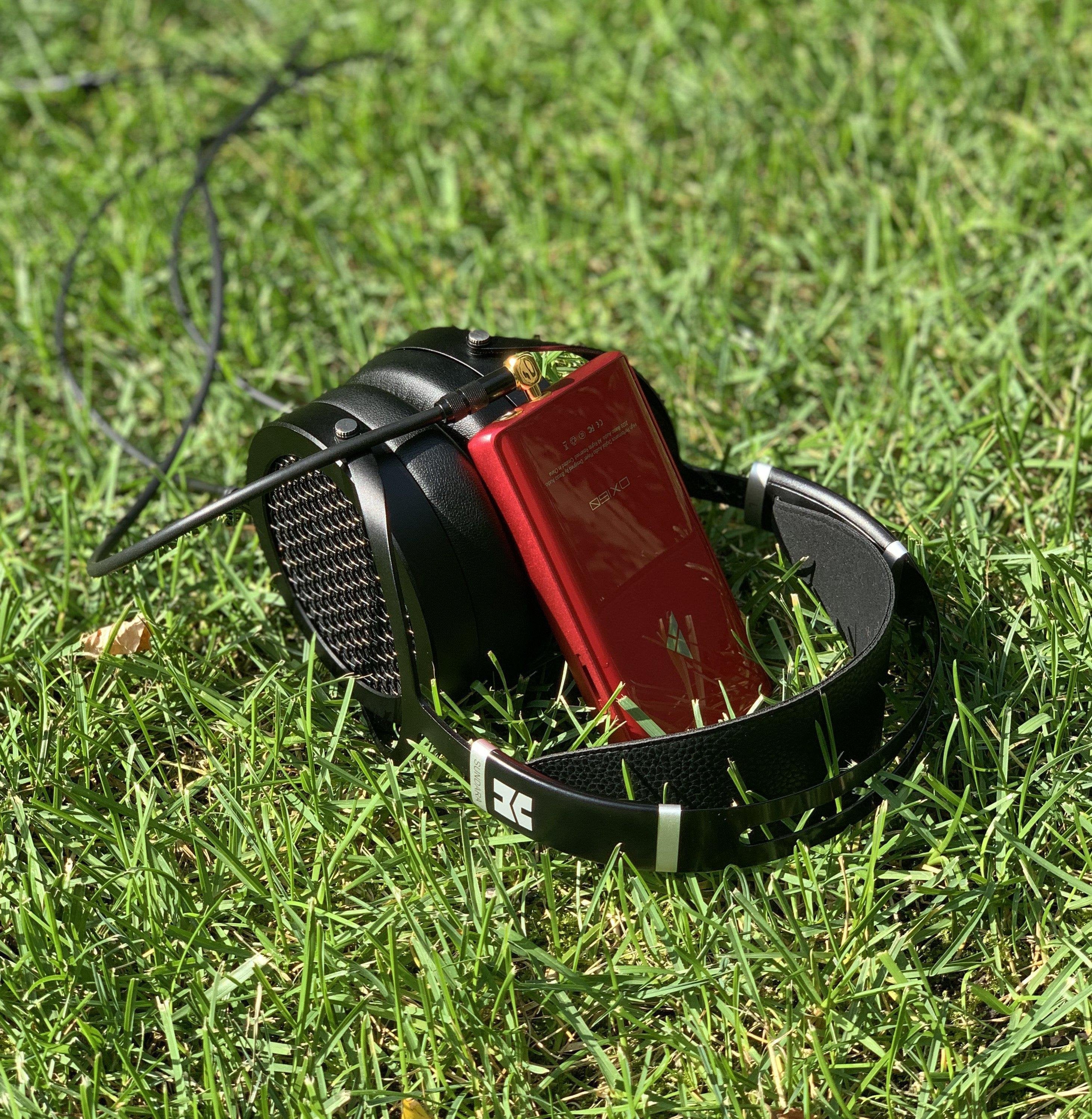With its strong brand pedigree and low price point, the HiFiMAN Sundara is currently one of the most popular entry points into the world of high end personal audio. Three years after it’s original launch, the Sundara isn’t showing any signs of slowing down. So the question is, what makes it such a popular headphone, and is it worth the hype?
Build and Design
Sundara arrives in a fairly nondescript box with a picture of the headphones on the front. Inside the box you get the headphones, a 3.5mm unbalanced cable, and a 6.3mm adapter. The headphones themselves feel solid and premium, with a construction that mixes metal, synthetic leather, and plastic.
The headphones aren’t particularly heavy, and have ample accommodation for larger heads, and a headband design which does a good job of distributing the weight. The earcups are soft and spacious – I didn’t have any trouble fitting my massive earlobes entirely inside them. I’ve heard some feedback that for folks with wider heads, the Sundara can feel a bit tight, but I didn’t experience any discomfort personally.
The Sound
Having recently spent some time with the absolutely sublime HiFiMAN Susvara, my first impression upon going to the Sundara was that someone gave an engineer the Susvara and then said, “How much of this can sound we reproduce at about 1/20th the price?” and the end result is that, while it can’t compare to the Susvara, they got way more than 1/20th of the sound for the money. The Sundara has a generally neutral tuning with a strong roll-off in the sub-bass, and some smaller recessions in the upper mids and treble. Generally speaking, it strikes a balance between detail and musicality with a sound that is revealing and has a solid energetic, physical component as well.
On Death Cab for Cutie’s “Grapevine Fires,” the intro drums sound natural, and the groove hits with solid impact. The layers that build through the chorus and into the second verse have a nice feeling of the balance between separation – each layer being clearly distinct and identifiable – and cohesion – each layer feeling connected to the whole. Throughout the song Ben Gibbard’s vocals are clear, personal, and emotional.
Listening to “Message in a Bottle” by The Police, you can hear some of the restraint in the treble end of the Sundara. While headphones with a more mid-forward tuning can often sound a bit sharp or fatiguing, the Sundara delivers Sting’s tenor vocal and Andy Summers jangly guitar with plenty detail and presence, but without anything becoming harsh. The cymbals also come through nicely, with plenty of sizzle on the hi-hats and a nice wet tone from the crashes, but without the accents becoming harsh or overpowering.
Depending on what kind of music you listen to, Sundara’s bass can tell two different tales. With a classic song like Bill Withers’ “Just the Two of Us” the bass drum has a nice impact and the interplay between the bass guitar and the impact of the bass drum has a natural sound and physical feeling. On a modern electronically driven pop track like Grimes’ “So Heavy I Fell Through the Earth,” the low end generally remains tight and coherent, but the sub-bass roll off leaves the lowest rumbles out of the song. Overall, the Sundara provides a solid low end with characteristics typical of planar magnetic headphones, but with some electronically driven music the reduction in the lowest of lows leaves the sound feeling a little empty.
Where the Sundara shone the brightest for me, with no caveats needed, was classical music. Listening Tchaikovksy’s “Waltz of the Flowers” as performed by the London Symphony Orchestra with the Sundara is absolutely sublime. The dynamics were excellent, the soundstage and imaging worked together to put me on the conductor’s rostrum as the orchestra swelled around me. Listening to Francois Dumont perform Bach on the piano, the piano sounds both massive and natural. The complexities of the piece and his fingerwork are deftly delivered, and a bit of fortissimo can even get those planar magnetic drivers to provide a nice slam to add the physical element of the sound.
I tested the Sundara with three different sources: the iBasso DX160 as a similarly priced DAP, the Astell&Kern SE200 as a more upscale source, and a Macbook Pro headphone jack, which is probably similar to the laptops or mobile devices that many people will be using as a source. The DX160 was essentially the baseline for judging the other. It paired nicely with the Sundara, and adjusting the EQ to bolster the sub-bass a bit on some songs worked quite nicely without causing any other issues. With the SE200, I felt that the Sundara scaled up really well. The soundstage and separation felt enhanced, and the Sundara felt more energetic and dynamic. The laptop headphone jack performed admirably, though it wasn’t on the same level as the other sources. The sound has a “compressed” feeling as if the highs and lows were shaved off a bit, and the dynamic range of the mids was limited a bit as well. While the volume was good overall, the laptop didn’t drive the bass particularly well, and some of the low end thump was missing.
The Bottom Line
While it’s not going to be the first pick for bassheads, the Sundara is an amazing value. It’s not only a highly competitive headphone in the under $500 range, it’s also worthy of at least an honorable mention in the under $1000 range. With a sound that is natural, detailed, and musical, the Sundara is a great entry point into the audiophile world.








